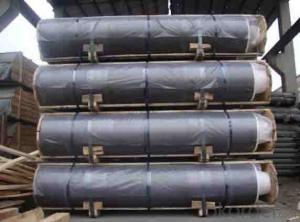When it comes to the world of manufacturing, graphite electrode machining is a process that has its own unique set of challenges. It’s not just about the technicalities; there’s a certain art to it that requires finesse, precision, and a deep understanding of the material. Graphite, being a soft, flaky, and electrically conductive material, poses a distinct set of hurdles when it comes to shaping it into the desired form. Let’s dive into the intricacies of this process, the obstacles we face, and how we can overcome them with a mix of innovation and creativity.
First off, the machinability of graphite is not as straightforward as one might think. It’s a delicate balance between maintaining the integrity of the material and achieving the desired precision. The softness of graphite makes it prone to tool wear and tear, which can lead to rapid dulling of the cutting edges. This is where the first challenge lies – finding the right tools that can withstand the demands of graphite machining without compromising on the quality of the final product.
Enter the world of diamond-coated tools. These bad boys are designed to tackle the abrasive nature of graphite, ensuring that the cutting edges stay sharp for longer periods. The use of diamond coatings not only prolongs the life of the tools but also improves the surface finish of the machined graphite electrodes. It’s a win-win situation that allows for a more efficient and effective machining process.
But wait, there’s more. The flakiness of graphite can cause issues during the machining process, leading to what we call ‘falling out’ of the material. This can result in an uneven surface and dimensional inaccuracies. To combat this, the use of proper cutting fluids is essential. These fluids not only help in reducing the heat generated during the process but also act as a barrier between the tool and the graphite, preventing the material from falling out.
Another challenge that comes into play is the electrical conductivity of graphite. This can cause issues with the machine tools, as the electrical discharge can interfere with the machining process. To tackle this, using non-conductive cutting fluids or implementing proper grounding techniques can help in minimizing the electrical interference.
Now, let’s talk about the machining parameters. Getting these right is crucial for achieving the desired quality and precision. The choice of cutting speed, feed rate, and depth of cut can significantly impact the outcome of the machining process. For graphite, a lower cutting speed and higher feed rate are generally recommended to reduce tool wear and achieve a better surface finish.
But here’s the kicker – every graphite electrode is unique, and what works for one might not work for another. This is where the importance of customization comes into play. By understanding the specific characteristics of the graphite being machined, we can tailor the machining parameters to suit the needs of the job, ensuring optimal results.
Let’s not forget about the health and safety aspect. Working with graphite can generate harmful dust particles, which can be detrimental to the health of the workers. It’s essential to implement proper ventilation systems and personal protective equipment to ensure the safety of everyone involved in the process.
In conclusion, graphite electrode machining is a complex process that requires a delicate balance of various factors. From selecting the right tools and cutting fluids to optimizing machining parameters and ensuring safety, there’s a lot that goes into achieving a successful outcome. It’s a process that demands attention to detail, innovation, and a deep understanding of the material. By addressing these challenges head-on and finding creative solutions, we can push the boundaries of what’s possible in the world of graphite machining.

